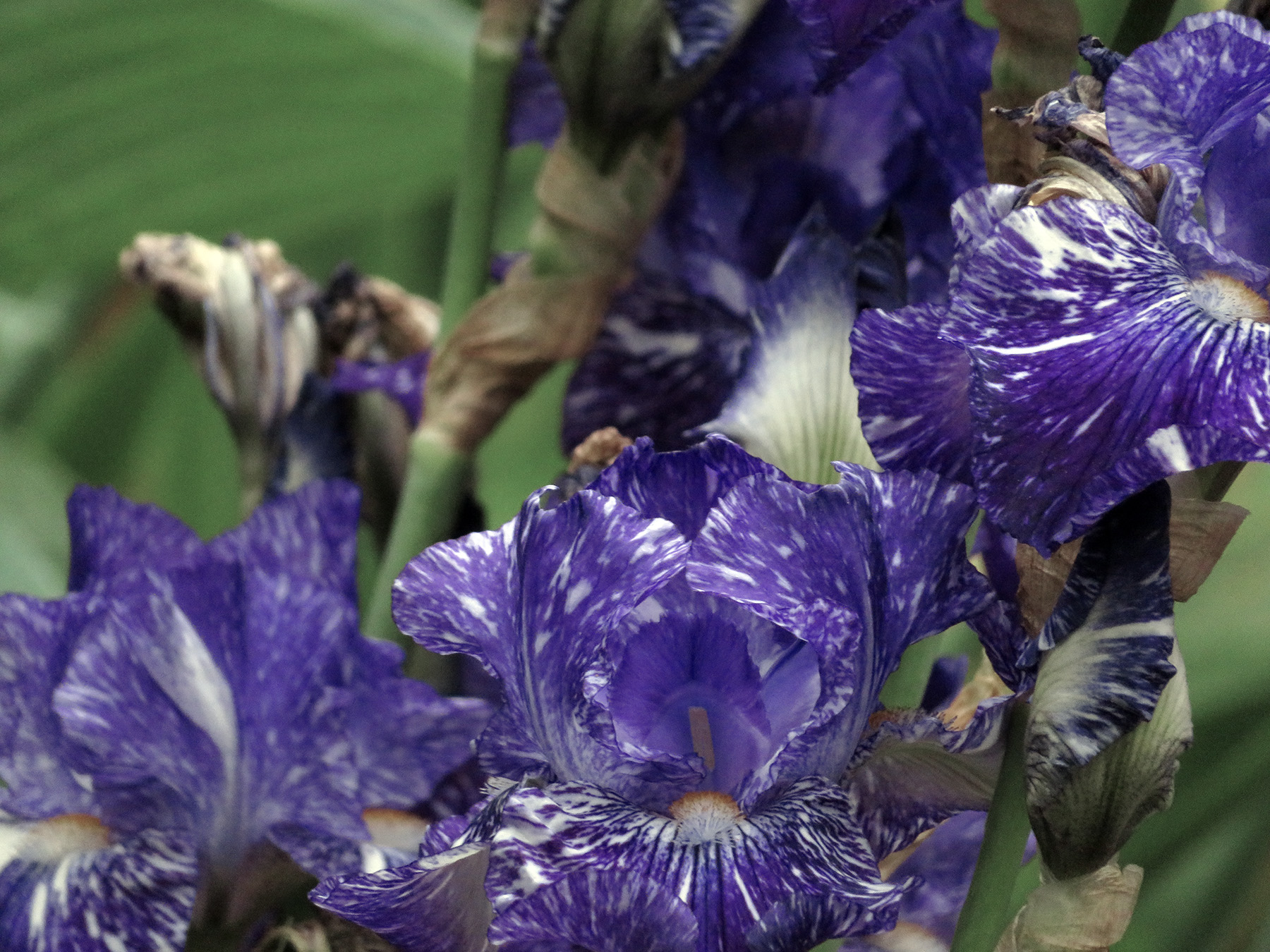In 1489 Albrecht Dürer painted an iris (Schwertlilie, as they are also called in German, literally translated as sword lily.) He was not the first (da Vinci had drawn them in great detail) nor the last painter to depict this plant – it is probably the most frequently offered flower in visual art right after the rose. In fact one of the earliest known artwork of an iris is a fresco in King Minos’ palace on the island of Crete from 2100 BC.


It was probably not just their beauty that attracted artists, but their symbolism, handed down from Greek mythology where she personified the rainbow and served (in Homer’s Iliad, for example) as a messenger of the gods. According to the Greek poet Hesiod, she was the daughter of Thaumas and the ocean nymph Electra. As the books tell me, in Hesiod’s works, at least, she had the additional duty of carrying water from the River Styx in a ewer whenever the gods had to take a solemn oath. The water would render unconscious for one year any god or goddess who lied. Can’t we have that here and now – for self-declared deities as well, given that it is only half a year until November and a long slumber would protect the nation? But I digress. You should be used to that now, though.
Here are a few samples from the 17ty century on. I will skip most of the golden period of Dutch flower paintings, since we would never get to the end, so much beauty there.






And here are some of the most famous of them all, from van Gogh in his declining years (who saw none of the proceeds this painting fetched not long ago, some 53 million dollars,) from Monet of the garden that was central to his artistic career and finally to O’Keefe, who we have probably seen as poster art for so long that we have ceased to appreciate the inherent power of her floral painting.





I have always been fascinated by irises, because they undergo visible transformation from the very tightly wrapped, spindle-like blossoms promising wonder, to the unfolding of decadent beauty in shape, color and velvety or silken texture, not coincidentally tempting sexual interpretation, to the metamorphosis into something slimy, curly, shriveled, an ugly death – they do not elegantly drop their petals, or droop the entire blossom like a fainting Victorian lady, they just stand there and decay into mush. Beauty carrying within it visible destruction.



When I was young I went for the showy specimens, trying to make watercolors of them to my eternal irritation, ripping up expensive paper, never finding them satisfactory. These days I like the wild irises better, dainty swaths of color in the landscape, often just glimpsed through large bushes of those sword-like leaves. The yellow flag iris, in particular, seems to be so beautiful against the backdrop of its favorite habitat – the edges of water.

Wouldn’t you know it: they are an invasive pest, even though they purify water by removing heavy metals and nutrients in agricultural runoff with their roots. “This fast-growing and fast-spreading invasive plant can outcompete other riparian (water loving) plants, forming almost impenetrable thickets.” — Okanagan and Similkameen Invasive Species Society.
In Oregon we have the most beautiful iris show garden and horticulturist exposition an hour’s drive South of Portland. Schreiner’s Iris Garden has been one of my favorite outings in May for some years, but it is closed now due to Covid-19. Some photographs from the past, then, mixed with some from this week from my walks, linking to the present just like Iris used the rainbow as a conduit to connect one world above to the other below.

Music today by Robert Paterson. Iris first, then Freya’s Tears, then Sekhmet.






Sam Blair
From my trusty “Book of Symbols” comes this: “Medicinal properties accompany the sensual pleasures of the Iris. On an Egyptian hieroglyph of an Iris carved in stone 3500 years ago, was a list of medicinal plants”. Iris tea, anyone?
Sam
Sara Lee
Wonderful posting! Much enjoyed – and enlightened by – it!
Evelyn Lorge
I thoroughly enjoyed both the pictures and your very informative comments. I learned a lot that I never knew before !
Evelyn Lorge